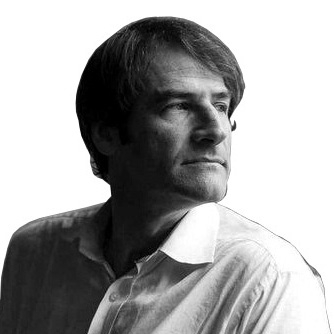Ricky Powell was always hanging out with a camera around his neck, part of the greater metropolitan Beastie Boys world. He took pictures, but he did so without assuming any professional airs about it, or even expressing any sense of artistic ambition around photography. His obvious progenitors were Andy Warhol and Allen Ginsberg, both of whom I had seen move through crowded nightclubs (Area, Danceteria, the Michael Todd Room of the Palladium, the World) with a little camera clutched in their hands like a shield. They took snapshots in the spirit of someone collecting material for a private scrapbook that would be put into the service of their art—visual, verbal, cinematic, or otherwise. Ricky had that same aura, except there was no obvious larger project of which it was in support, other than the project of being Rick the Rickster.

It was an aesthetic that eventually filled four published books of photography and a soon-to-be-released documentary, though the locus of energy would always be associated with the Beastie Boys/early Def Jam era of New York. Looking at Ricky’s pictures from that time feels as though you have drilled down into a Manhattan street in the same way scientists drill out a core of Arctic ice, and found there among the layers the distinct flavor of 1980s hip-hop and nightclub culture, probably the last period of time this culture was specific to New York City, before it spread across the globe.

Ricky lived on Charles Street. Years after our initial encounters, I moved around the corner and would often bump into him, ambling with his baseball cap tilted on his head, a messenger bag over his shoulder, his sneakers usually Puma Clydes, and we would stop and talk, fellow citizens of the old world. Once, as we chatted together in the early 2000s, he took out his wallet and showed me his middle-school bus pass, an artifact from the New York City of The Taking of Pelham One Two Three and Dog Day Afternoon. I grasped that while he made his name in the 80s, it was the previous decade that had forged his aesthetic. Dr. J, Kareem, Joe Namath, Pete Maravich, and, most of all, Clyde Frazier—these were the icons.
His ground-floor studio, window facing the street, was the most artifact-packed living space I have ever seen. I don’t mean it was stuffed to the rafters with junk but that it was curated, like a museum, and I hope it is someday turned into a proper one. It would include his pictures of the Beastie Boys, Run-DMC, and Chuck D, surely, but at its spiritual and physical center there should be, in a glass vitrine all its own, his middle-school bus pass, a kind of Rosebud object for a certain generation of New Yorkers.
Thomas Beller is the author of several books, including Seduction Theory, The Sleep-Over Artist, and J.D. Salinger: The Escape Artist







